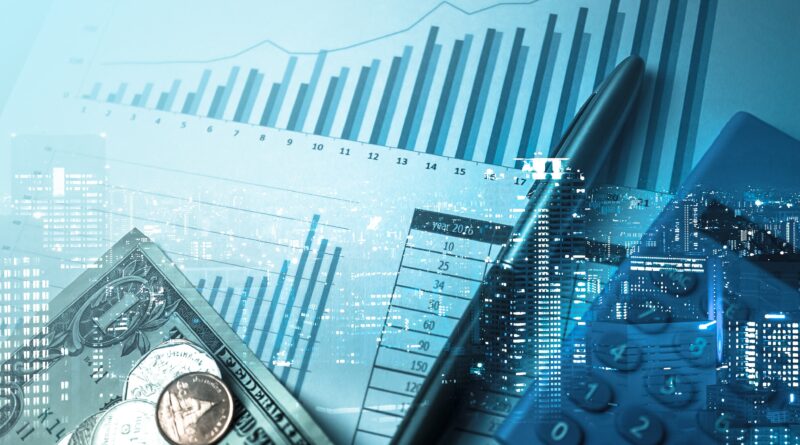If you have these shares, absolutely do not sell them. I'll tell you why
The American stock market seems headed towards new highs.
Many are already thinking of selling everything and taking the profits home.
I wouldn't be in such a hurry.
Despite the strong concentration of the US market rally in technology stocks that have become very expensive in the last 6 months and focused on artificial intelligence, analysts say that Wall Street is not yet in bubble territory.
The S&P 500 index has risen for 16 of the last 18 weeks and reached a new all-time high on Friday, but the gains were heavily concentrated among the so-called technological giants, i.e.
the Magnificent 7, led by that true "war machine" of finance that is Nvidia.
Meanwhile, the US Federal Reserve is expected to begin cutting interest rates in June, potentially providing further upside to high-growth technology stocks.
Jerome Powell said before Congress that the Fed isn't in that much of a hurry to cut rates, but sooner or later it will, rest assured.
The sheer scale of the S&P 500 rally and the “narrow” nature of this bull run have sparked some concern about a market bubble, with some analysts even drawing comparisons to the dot-com bubble of the late 1990s .
If you recall, in January 1995, when the Fed concluded a cycle of interest rate hikes that brought the Fed funds rate to 6%, the S&P 500 began a bull run that produced more than 27% annualized returns over the next five and more years.
Until the bubble spectacularly burst in March/April 2000.
As you can see in the Bloomberg chart below, the bull run of the 1990s saw two phases: a broad, steady climb from early '95 to mid-'98 , and then a narrower and more explosive phase from late '98 to early 2000.
Looking at what has happened over the last 6-9 months, it appears that the current dynamics and correlations are similar to the second phase of the bull market in 1998-2000.
In some cases, even the P/E valuations of the technology sector are not that far off.
Yet despite the superficial similarities, it is my opinion that there is no bubble ready to burst, because there are notable differences in earnings, realized margins, cash flow, IPO and M&A activity.
I have already written about these last characteristics relating to the solid and profitable balance sheets of the companies in the S&P 500 and those belonging to the Magnificent 7 group in two of my recent articles for Money.it Premium which you can read here: No, the S&P 500 is not in a bubble speculative.
Here's how to take advantage of it Stocks: is the bubble about to burst? No (and I'll explain why) In 2 years, from the highs of 7 April 2000 to the lows of 11 October 2002, the index halved its value, going from 1,508 to 780.
The top 10 companies in the S&P 500 represent approximately 34% of the total market capitalization of the index, but I reiterate that this concentration is justified given the stellar earnings of these companies.
However, this means that it is difficult for the overall index to see a significant rise without the participation of the technology sector, but it also means that the index is vulnerable to idiosyncratic risks of these companies, namely a collapse in profitability in the coming months.
A collapse in profits, however, is not on the horizon.
And with the Fed cutting rates in the second half of the year, introducing even more favorable financial conditions for M&A operations, share buyback operations on the market and IPO operations.
In short, falling rates and still robust profits will further fuel the engine of the stock rally.
However, the Fed's dovish turn and resilient economic growth in recent months have enabled the stock market's international breadth to improve, both in sector and geographic terms, with European and Japanese indices hitting record highs in recent weeks.
In short, it is as if the American stock market is dragging the other international stock markets with it.
Because the other indices are also made by companies that close their financial statements in profit.
In short, even in Europe the stock gains so far are justified by the fundamentals, i.e.
by the expectations on the ECB's monetary policy in the coming months, and by the general growth prospects of the euro zone (with the exception of Germany), together with a strong season of fourth quarter earnings.
In general, but it is not a law of physics, every stock market bubble needs three ingredients to inflate: a solid fundamental story of corporate profitability, a compelling narrative from company CEOs about future growth, lots of liquidity in the system, accompanied by high financial leverage (ratio of debt to equity).
While the AI-driven bull market meets the first three criteria, the fourth, that of high corporate debt, appears lacking.
In fact, thanks to the Bloomberg database I built a double graph and compared the Net Debt/Ebitda indicator with the EPS (earnings per share) indicator of the S&P 500 basket over the last 34 years, from 1990 to 2024.
Look carefully the chart.
Companies are increasingly less indebted and increasingly profitable, and this characteristic makes the 2023-2024 rally profoundly different from the 1995-2000 rally.
This rally has solid legs.
The one from 1995-2000 had clay ones.
After the excessive debt of the early 2000s, when net debt/Ebitda was over 6x, we are now at 1.35x, while earnings per share – which in 1990 were around $8 – have now reached $57.
SP500 companies are much less indebted today, on average, than they were in 2000 and are much more profitable today than they were in the late 1990s.
So, don't sell your position in stocks and equity ETFs on the American market: liquidity is still abundant, and leverage is not at worrying levels and rates are about to fall starting this coming summer.
It should also be added that, so far, the Fed's Quantitative Tightening (i.e.
the reduction of the balance sheet, with the reduction of Treasuries in the portfolio and the draining of excess liquidity), which many were afraid of, has not instead led to a gigantic contraction of liquidity in the United States.
A JPMorgan estimate from January 2024 stated that the market for money market funds, commercial papers, and short-term corporate bonds totaled over $7 trillion, a symptom of the abundant cash available to companies on their balance sheets, as well as in corporate coffers.
fund managers.
But be careful: the absence of a bubble does not necessarily mean that the market will continue to grow indiscriminately.
Sooner or later a consolidation is necessary, or rather perhaps more than one.
But any pull-back of the indices will still take place within the bullish trend that remains intact for 2024.
And any reversal will be short-lived, because the abundant liquidity will mean that investors will be hungry for equity again and will immediately return to the market as soon as they see prices they consider attractive.
DISCLAIMER The information and considerations contained in this article should not be used as the sole or primary support on which to make investment decisions.
The reader maintains full freedom in his own investment choices and full responsibility in making them, since he alone knows his risk propensity and his time horizon.
The information contained in the article is provided for informational purposes only and its disclosure does not constitute and should not be considered an offer or solicitation to public savings.




